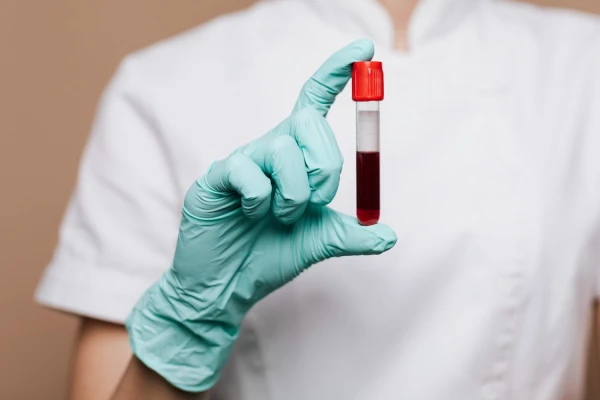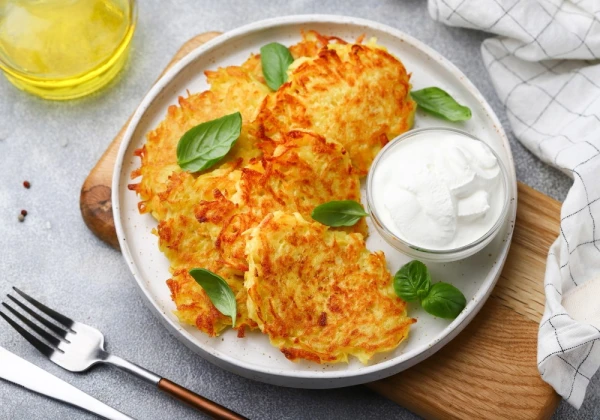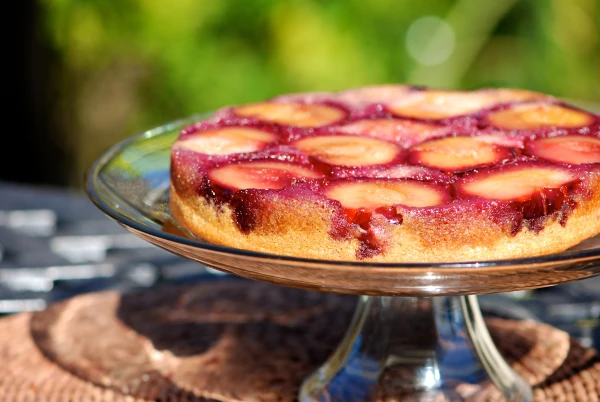
Increased blood viscosity can raise the risk of serious diseases that threaten health and life. Is it possible to thin blood without the use of medications?
One of the key properties of blood is its rheological characteristics, meaning its fluidity and ability to move freely through vessels. If these properties are disrupted, the likelihood of thrombus formation increases. Physician, cardiologist, and gastroenterologist Alexander Ostashkov shares recommendations on how to thin blood without the use of medications.
What is Blood Fluidity
Blood fluidity is determined by several factors. Its rheological properties are influenced by overall hydration levels, physical activity, and the presence of certain diseases such as blood coagulation disorders, atherosclerosis, influenza, severe forms of ARVI, liver and kidney diseases, dehydration, prolonged use of certain medications, as well as the consumption of nicotine and alcohol.
When blood becomes too viscous, measures must be taken to thin it. Otherwise, the risk of developing blood clots and a range of cardiovascular diseases, including heart attacks and strokes, increases. Predisposing factors for this condition may include diabetes and chronic stress.
Alarming Symptoms
Sometimes it is difficult to suspect problems with blood viscosity on your own, as they can remain undiagnosed for a long time and exist without pronounced symptoms. Often, diagnosis occurs accidentally during a routine medical examination. Pay attention to the following alarming symptoms:
-
frequent headaches;
-
chronic fatigue;
-
shortness of breath and rapid heartbeat;
-
changes in skin tone (cyanosis);
-
increased sensitivity to cold and cold extremities.
However, only a doctor can accurately determine the need for measures to thin the blood. In some cases, a specialist may recommend adhering to dietary and lifestyle recommendations, as well as considering other ways to maintain the rheological properties of blood. Each of these points requires detailed attention.
1. Nutritional Correction
Adhering to the principles of proper nutrition is one of the effective methods for maintaining normal blood fluidity. There are products that should definitely be included in the diet, as they help maintain blood functions and its rheological properties, as well as prevent possible negative consequences.
The diet should include as many sources of omega-3 fatty acids as possible. For example, fatty fish (salmon, mackerel), as well as nuts and seeds. Healthy fats help lower bad cholesterol levels, further improving blood fluidity.
The diet should also include fruits and vegetables that contain vitamin E. This nutrient has many beneficial properties. It is classified as an antioxidant and an anticoagulant. Sources of vitamin E include avocados, kiwis, tomatoes, spinach, and broccoli. Vegetables high in salicylates—substances that prevent thrombus formation—are also beneficial: cucumbers, tomatoes, apricots, red grapes, and some citrus fruits.
In addition to beneficial foods, there are those whose consumption should be limited due to their ability to increase blood viscosity. For example, red meat, sweets, and fast food.
2. Hydration
Blood consists of formed elements and plasma—a liquid. Therefore, hydration plays a key role in maintaining normal blood fluidity. It is recommended to consume about 1.5-2 liters of liquid per day. These are general figures; one should consider the level of physical activity, weather conditions, age, and health status.
However, it is important to consider which liquids can and should be consumed. For example, tea, especially green tea, and natural juices support blood fluidity due to their content of certain beneficial substances. In contrast, beverages high in sugar and caffeine can contribute to dehydration due to their diuretic effects.
3. Active Lifestyle
The risks of thrombosis can be reduced through regular physical activity. This does not mean heavy workouts in the gym. It is sufficient to practice brisk walking, swimming, or yoga. The key is regularity. Such activities improve circulation and strengthen the cardiovascular system. About 150 minutes of moderate-intensity physical activity per week is recommended.
The total can be broken down into several sessions—for example, 30 minutes a day, five days a week. The training program should include cardio and strength exercises that help strengthen muscles and improve metabolism.
5 Foods That Thicken Blood
-
alcohol,
-
refined sugar,
-
bananas,
-
buckwheat,
-
fatty foods.
Some should simply be limited, while others need to be completely excluded from the diet.
7 Foods That Are Necessary for Maintaining a Healthy State in Such Problems
1. Cranberries
This very sour and very beneficial berry helps greatly with inflammation and supports blood vessels. Sugar will spoil its qualities, so cranberry juice should be completely natural. It can also be used to garnish porridge.
2. Ginger
This spicy item not only thins the blood but also stimulates circulation. It can be added to tea or dishes—but moderation is key. This is not an easy product.
3. Pomegranate
The elasticity of blood vessels is worth buying and eating pomegranate for. Moreover, this fruit helps prevent thrombosis. It should be eaten raw, either on its own or as part of a dish, such as a salad.
4. Pumpkin Seeds
Their benefits seem endless. For thinning blood, pumpkin seeds are very useful. They contain vitamin E, which also helps prevent thrombus formation. They should be eaten raw and can be added to dishes.
5. Barley
Fiber and B vitamins—barley is very beneficial on its own. Barley porridge and soups with barley are not only good for health but also delicious.
6. Beets
Beets are excellent for thinning blood and cleaning blood vessels, normalizing pressure, and promoting circulation. The benefits of beets cannot be overstated. Like pomegranate, it also increases the elasticity of blood vessels, but it is much easier to obtain. It is best eaten fresh, but cooked or baked beets are also suitable.
7. Garlic
Last on the list but of utmost importance. No other product listed is aimed at reducing blood coagulation as effectively as garlic. Consequently, garlic also lowers blood pressure.
Maintaining normal blood fluidity is an important task for everyone, especially for those with a family predisposition to cardiovascular diseases. Adhere to the principles of proper nutrition, hydration, and engage in regular physical activity—all of which will help achieve this goal without the use of medications. Nonetheless, it is important to regularly visit a doctor for preventive check-ups and screenings—this will help identify problems in a timely manner and initiate treatment.









